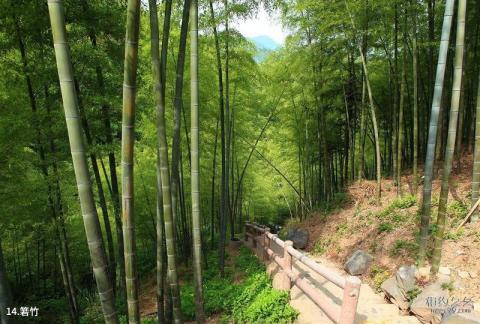
Introduction to Ruo Bamboo: There is a kind of small bamboo growing in the mountains with large leaves, called "Ruo Bamboo". Its leaves can be used to wrap rice dumplings. Local people also use it to pack dried bamboo shoots and tea leaves, which has a moisture-proof effect. In the past, some people used it as "tiles" to build houses, which is durable. Ruozhu is said to bloom once every sixty years. After flowering, it will produce fruits that look like barley grains. After being shelled, they become snow-white rice grains, which can be burned into rice or ground into powder to make cakes and glutinous rice balls, which are as smooth as glutinous rice. In 1961, during the food crisis, many people starved to death. However, Ruo bamboos were blooming and bearing fruits everywhere in Anji County, so people relied on Ruo food to tide them over. The bamboo will die that year after it blooms and bears fruit, and its seeds will grow new ones when they fall to the ground. Anji is known as the "Bamboo Town of China". The moso bamboo here stands tall and graceful, and bamboo shoots sprout out of the ground every spring. Bamboo has many uses and can be used as building materials. There is a layer of white powder on the bamboo joints of Hsinchu. This white powder can be used as medicine and has hemostatic effect. It is said that the effect is comparable to that of Yunnan Baiyao. Even bamboo roots can be used to make bamboo root carving crafts. It can be said that bamboo is full of treasures from top to bottom. People in Anji rely on the mountains to eat. If there are bamboos on the mountains, there will be bamboo shoots. They are a delicacy to go with rice and are listed as one of the mountain delicacies. Master Wu Changshuo once wrote a poem: "Guests often taste eight delicacies, which are not as fragrant as the wild bamboo shoots in the mountains."
